Romanian folklore is a rich source of fairy-tales and traditions filled with wisdom and symbolism and bearing witness to a millennial culture, such as Dragobete, the Romanian version of Valentine’s Day, Ziua Indragostitilor and celebrated not on 14 February, but on 24 February.
Dragobete, origin and signification
A few theories explain the origin of this celebration and the etymology of its name. Some say it derives from “dragubete”=”dragu” (meaning dear, beloved in Romanian) + “-bete” (a Slavonic suffix meaning gathering).
Some say it coincides with the Christian celebration of The First Finding of the Honorable Head of Prophet John the Baptist, named in Slavonic Glavo-Obretenia and adopted during the Middle Ages by Romanians under various names, such as Bragobete, later Dragobete. Some see in Dragobete an old Dacian tradition taking place during this specific time of the year, beginning of spring, by using the connection with two Dacian words: ‘trago” (tap, goat) and “pede” (picioare, feet). And the Dacians inherited their legends from the Thracians, Indo-European tribes mentioned as far back as the legends of Iliad and Odyssey, 600 -800 years before the times of Saint Valentine.
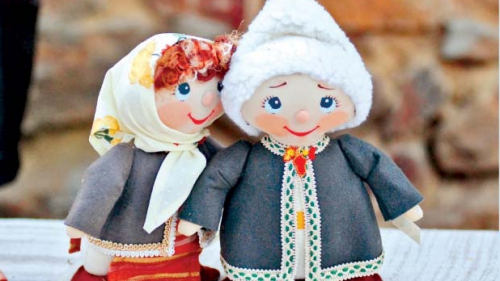
Perhaps the best connection with Valentine’s Day is by associating Dragobete with a character from Romanian mythology, patron of love and good cheer. He was the son of Baba Dochia, a figure that marks the return of spring, described as a demigod with special powers, young and good looking, and kind hearted. And with spring comes the renewal of nature and love. This explains why Dragobete is celebrated on this day, as 24 February was considered the beginning of the new agricultural season.
Based on the popular tradition surrounding this specific date in Romania, 24 February, birds and animals all find their mates and build nests, as it is a celebration of fertility and nature’s rebirth. I is said that if girls and boys enjoy a day of jokes and fun together then they will enjoy of a year full of love, for sure. For Dragobete protects love and those who share it on this day.
Dragobete is also a symbol for spring and new beginning, for changing of seasons from winter that we leave behind, to spring, ahead of us, a change from long night to shorter ones and longer days, filled with sunshine.
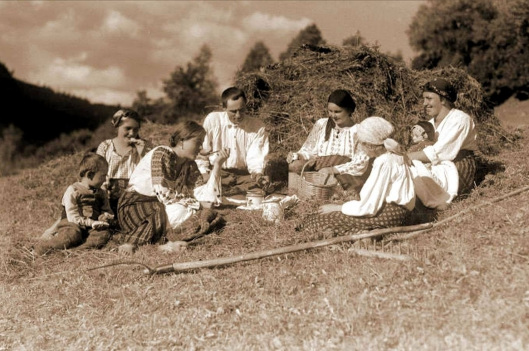
Romanian folklore presents Dragobete as a handsome young man with hair as black as ebony and eyes as green as the spring leaves, who would play his whistle and make the girls fall for him. He is the one responsible for teaching humankind how to love. As a reward, Virgin Mary turned him into a plant, Navalnic, Impetuous or hart’s-tongue fern. Other folk tales speak of Dragobete as teasing Virgin Mary and making her lose her path in the forest, thus she changed him into the same plant.
Up to today, this plant is said to bring young maidens good luck in love if they wear it tucked in their bosom in a silk bag. Although modern times swapped the plant for a banknote.
Popular tradition speaks of young girls and boys meeting outside the village church and heading for the woods to gather spring flowers. If raspberry flowers were in sight, it was a good sign. They were soon picked while the girls would sing:
“Flower of raspberry,
Romanian country song for Dragobete
Born in February,
Make the whole world like me
And take away all that’s beastly”
Afterwards, the boys and girls light up fires and sit around and talk. At noon, the girls sprint for the village, each followed by a boy the boy who liked her the most. If the boy catches the girl and if she also likes him, they kiss in front of everybody, thus becoming engaged for one year, on Dragobete, by showing their attachment for each other in front of everybody.
I don’t know what happens if two boys chase a girl. But all young adults were urged to take part in this ceremony for, as tradition also says, participating in Dragobete will protect you from any illness during the coming year. I would say enough for any elderly villager…
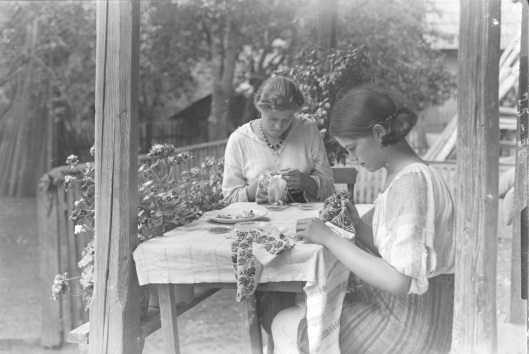
Want to have luck in love? Here’s what you should do on Dragobete, on 24 February
Wash your hair with snow. Gather fresh, unspoiled snow, melt it and wash your hair and your face to stay beautiful all year round and for the boys to notice you first. The Dragobete snow is said to be perfect for love charms.
Kiss your loved one on Dragobete or at least make sure you get to see the one you fancy and you two will be together forever or at least you will increase your chances of ending up together.
Be merry and joyful on Dragobete day and you will stay like this the entire year.
In some parts of Romania the common belief says that stepping on your partner’s foot on Dragobete will establish your dominance in the relationship. At least during the year ahead.
You can pick or buy crocuses, violets or snowdrops to hang them above the icons in your home – it will keep you young as well as chase away any bad thoughts or envy held against you. These flowers, once dry, can be thrown on a moving water on 24 June, on Sanziene Day (or Dragaica, a night when all magic is possible), to attract all bad luck down the river with them.
Clean your house on Dragobete day for a fruitful year and to guarantee your husband’s love. But, if you are a boy don’t dig or work the ground or Dragobete might punish you because you don’t have fun.
Boys and all men should not tease the girls or be nasty towards them on Dragobete, or they will set themselves for an unlucky spring.
Plant basil so it will grow until Saint George, the day after Easter, when it’s the perfect time to replant it in the garden. The basil planted on Dragobete is perfect for spells, charms, and cures, for it is said it hold special powers. Besides, the Dragobete basil is the one girls can use in various rituals throughput the year to help them foresee their chosen one.
Try to spot a hoopoe on Dragobete and you will have good luck all year. But if you spot a pair of birds, you will have good luck in love.
If you drink cherry tea on Dragobete you will know love all year round.
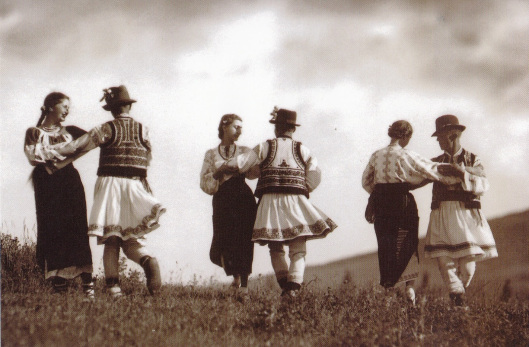
A Dragobete spell from Ardeal region of Romania:
Old women would go in the forest to pick hart’s-tongue fern. Before they pull it from the ground they whisper the name of the girl they collect for and drop honey, flour and some sugar at the plant’s root. Picked only this way can the fern be used for magic spells that are supposed to make a certain boy love the girl it was picked for.
What you should NOT do on Dragobete, on 24February, to avoid any bad luck
Because it is a celebration of love and rebirth, don’t buy or sacrifice any animals on this day.
Don’t sew, wash or iron, but you can clean your home.
What makes Dragobete or Valentine’s day so special ,lasting the test of time?
Is it the nostalgic feeling all tradition carries, the romance that puts a spring in our step, no matter how much we deny its importance during the rest of the year?
Or is it simpler then that. It is the need for hope and the feeling of belonging, to know that our existence carries some sort of meaning for someone else? Someone we care for too.
How many Saint Valentine are there?
The Saint Valentine we all know so well was a 3rd century Roman saint venerated by Catholic Church, Anglican Communion, and Lutheran Church on the 14th of February.
Eastern Orthodox Church celebrates Saint Valentin, Bishop of Umbria, on the 30th of July. Saint Valentine of Umbria was born in 175 AD in Interamna (today Terni, in Umbria Italy), and performed numerous miracles, healing the sick. When he was almost one hundred years old he was arrested in the middle of the night (to avoid protests from people of Terni), tortured and decapitated in Rome during the ruling of Marc Aureliu.

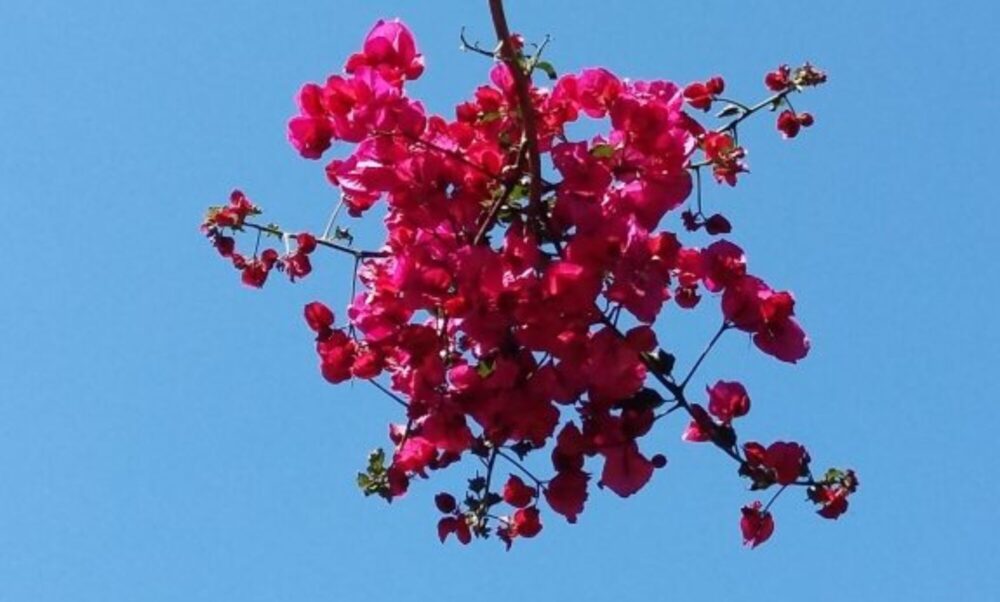
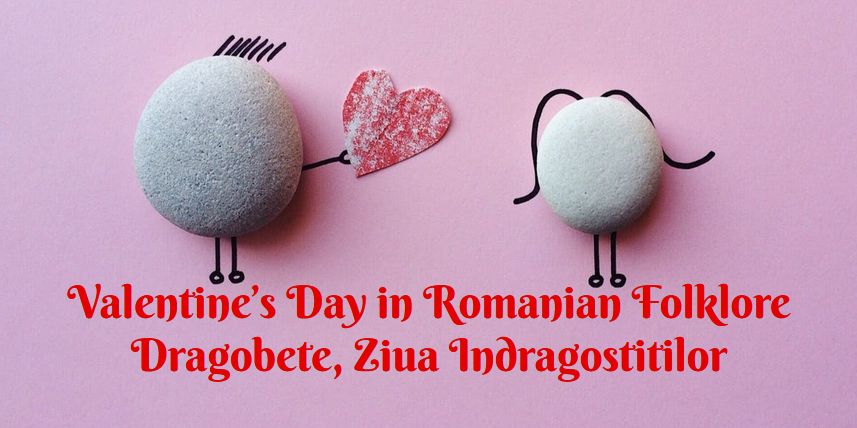
Some amazing traditions and folklore there Pat, thank you for sharing.
Folklore is quite fascinating, isn’t it 🙂
Thank you so much for reading, Peter, and for visiting.
What a wonderful post, Pat. I love learning about other traditions and their origins. Thanks for sharing!
Thank you so much for dropping by, Diana 🙂
I have to admit that I learned quite a bit too!
Enjoyed reading the tradition.Described in detail.Thank you for sharing the knowledge.
Many thanks for stopping by 🙂 Must admit that I, too, have learned a few things along the way.
With pleasure 🙂
Lovely! Happy Dragobete, Pat 🙂 btw, as a fellow author, I’d love if you’d guest blog post for my site. if you’re so inclined, here’s a link to general guidelines: https://wp.me/p6OZAy-ik
You are too lovely! Thank you, Daal, Happy Dragobete to you too 🙂
I would love to guest post for your blog, there is so much joy and music over at Happiness Between Tails 🙂 I have two other guest posts I promised, but made a note and will keep in touch – I really appreciate your invitation!
Thank you for stopping by xx
the pleasure is all mine! <3